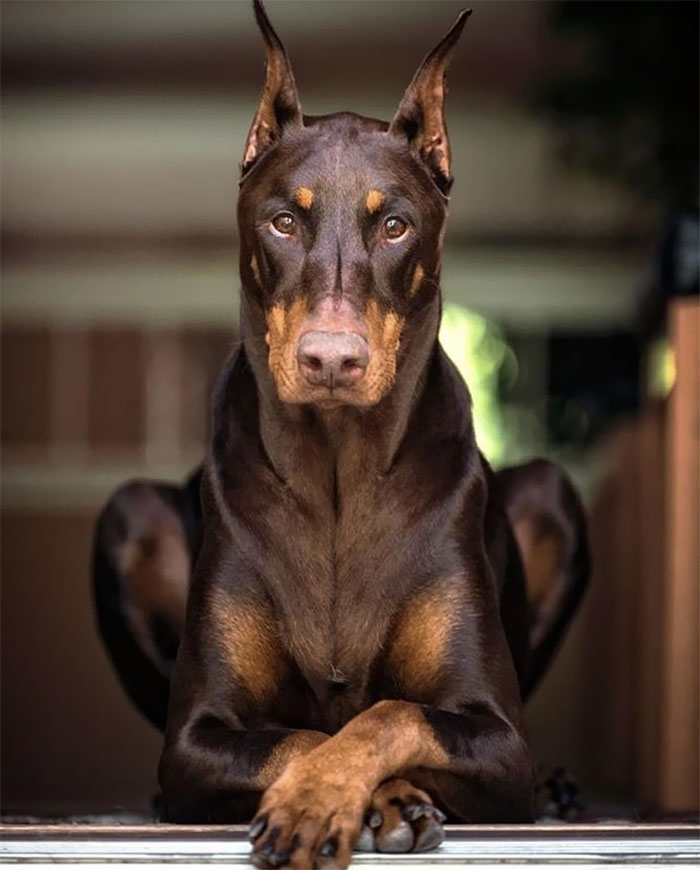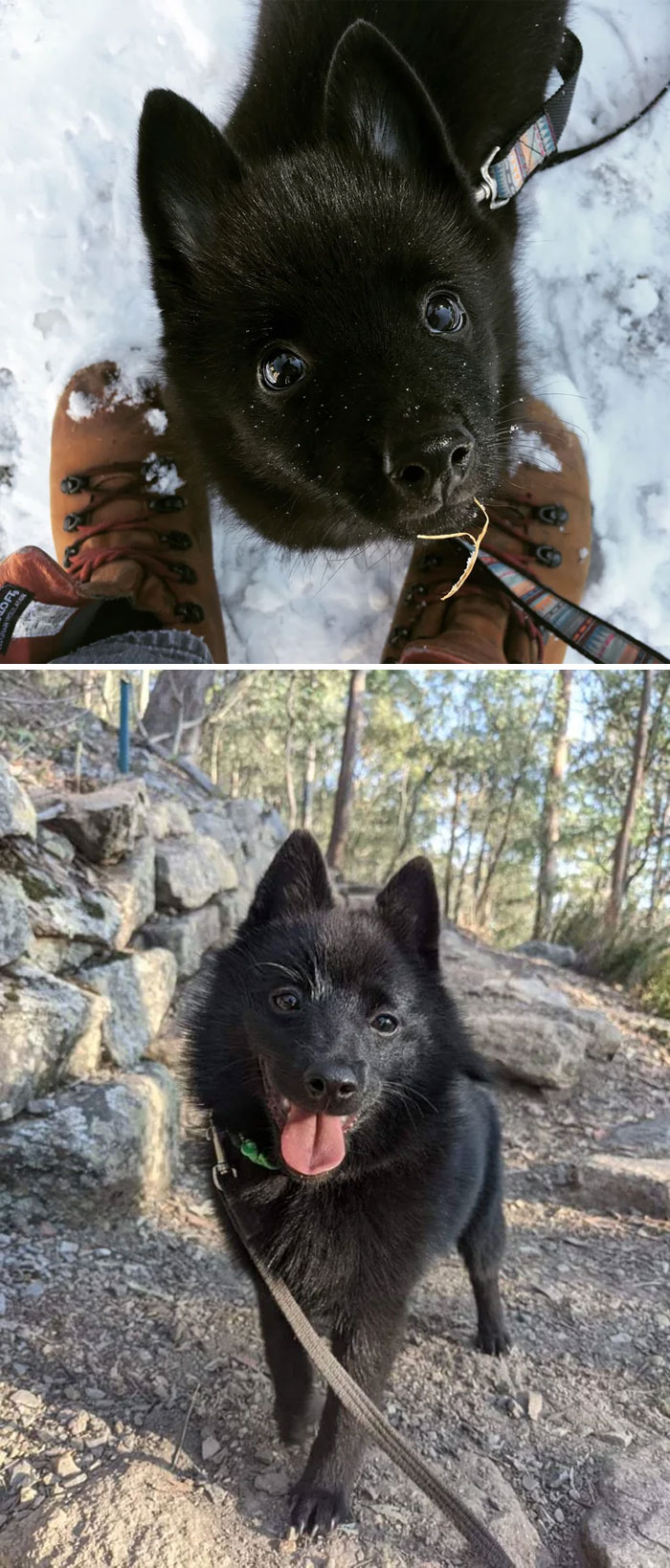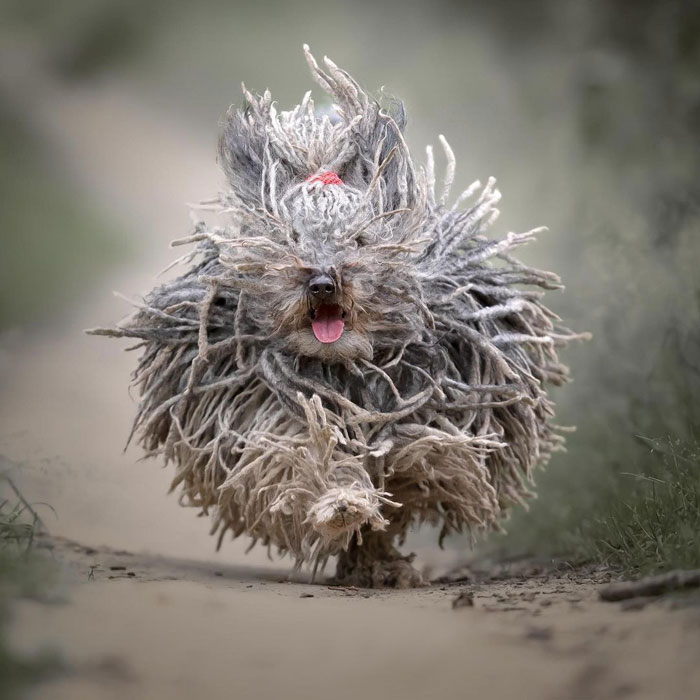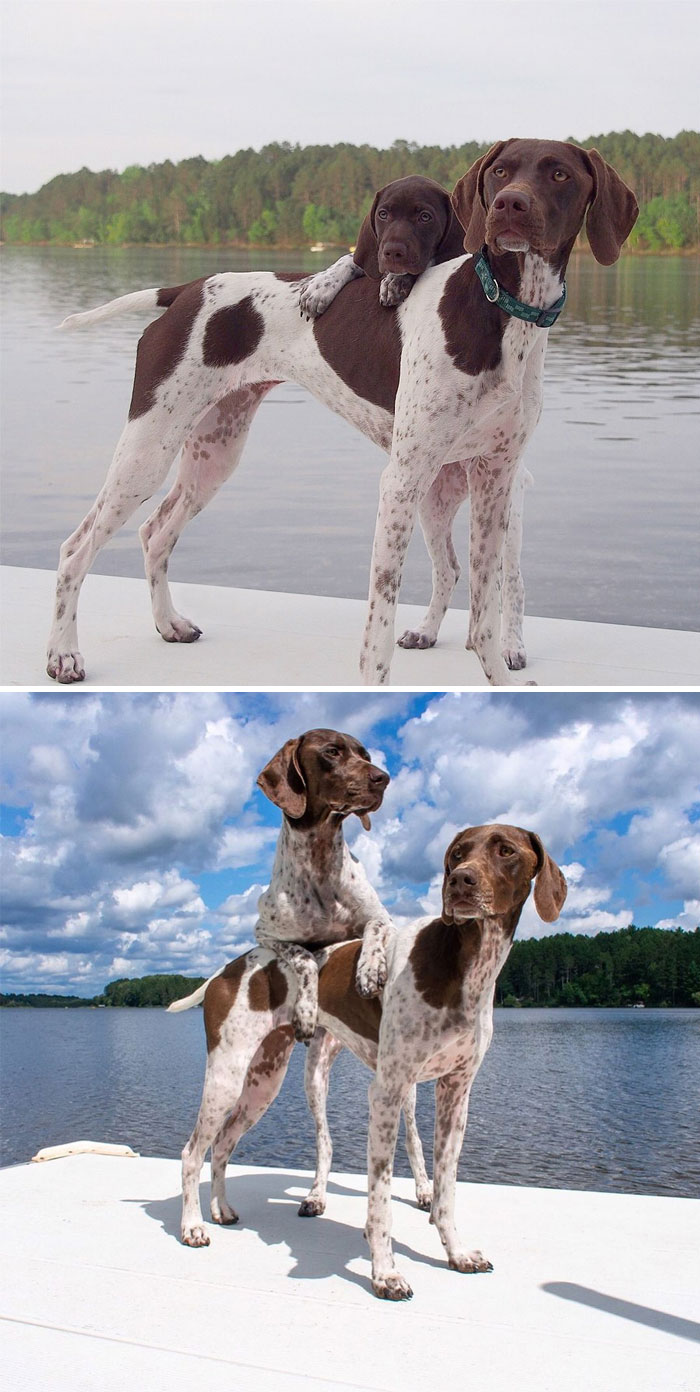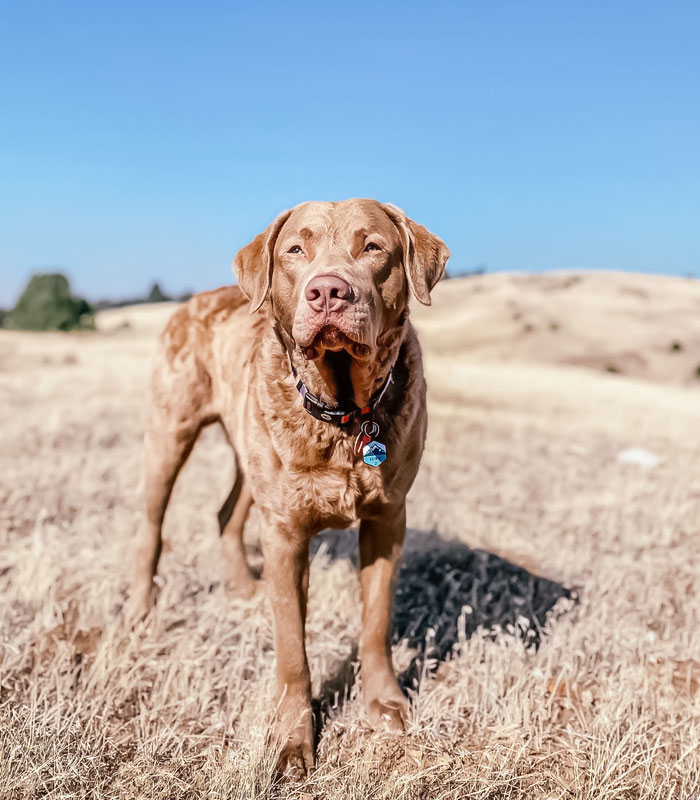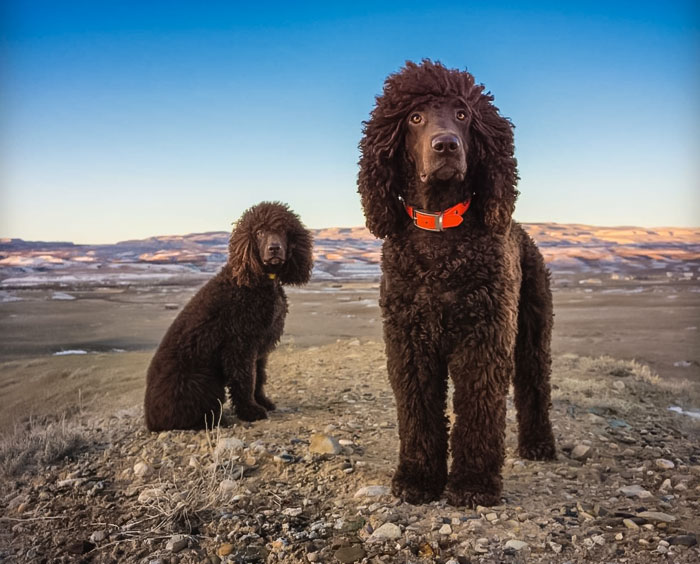We all know that dogs are highly loveable creatures - how else could they've conquered us as the human race to love them, feed them, and take them on adventures. And while our adorable four-legged pals achieve all this primarily by being irresistibly cute, they won't have gotten this far without some sort of intelligence set in their snack-oriented craniums. And though you might think that YOUR dog is the brainiest, there's a science-proven list of the smartest dog breeds. So, let's see what makes a breed intelligent and how it is evaluated.
A dog's intelligence is measured by their ability to acquire new information, store it in their memory, learn new behaviors, and mix and match the things they've learned to use in new situations. Basically, the same as with us, the biped owners. Studies also suggest that dogs are capable of emotional intelligence and have complex feelings like jealousy and anticipation. As for the smartness evaluation process - it's all about the speed of learning new things and obeying faultlessly. For example, top dogs bred for work tend to remember commands only after five repetitions and comply with orders 95 percent of the time.
So now that we know what makes smart dogs the way they are, let's see if your adorable puppy is on the list of the most intelligent dog breeds. Scroll down below to meet the top pups, share this article with your canine-loving friends, and tell us about your smart dogs!
This post may include affiliate links.
Border Collie
Descendants of the British Isles, Border Collies are consistently named first in every list of intelligent dog breeds. Border Collies are bred to serve as livestock herders; however, their superior cognition abilities, extreme athleticism, and friendly nature have made them the top contenders in various dog sports and cherished companion pets. And though owning a highly intelligent dog might sound tempting, Border Collies need a lot of physical and mental exercise. So, before getting a puppy, be sure you'll be able to meet its needs.
My neighbor has a border collie that I just met for the first time. I had a squirrel stuffed dog toy in my car and gave it to him. Never met the dog, but after I threw it to him and he caught it, he brought it right back to my feet and wanted me to throw it again. Smart puppers. Ran into my neighbors husband with the dog at the dog park in our complex. Mentioned the squirrel and he said "He drove me crazy last night bringing that to me every five seconds for me to throw." Oops...sorry about that...LOL!
PDSA Vet Lynne James told Bored Panda there are several ways that scientists have tried to test intelligence in dogs.
"Studies have looked at memory, awareness, understanding of human gestures, and social-learning," James explained. "Dogs are shown to be able to follow human pointing cues to find a hidden piece of food; a task that wolves are shown to fail. Dogs can be trained to differentiate between different shapes, colors, and patterns using touchscreens, and some dogs can understand the names of hundreds of different objects. Games such as 'Hide and Seek' demonstrate that dogs can remember where objects are and that they have an understanding of the environment. Dogs can also watch other dogs learn how to complete a task, and copy them."
That's why judging a dog's intelligence based solely on how well they can be trained to follow our commands is a huge mistake!.
"Some dogs just might not find it that important to do what their owner tells them, which doesn’t mean they're not intelligent!" James said.
German Shepherd
German Shepherds are a breed originating from, you guessed it, Germany and bred, you guessed it again, to work as livestock herders. Despite their wolf-like appearance, this dog breed is relatively modern, being first described in 1899. Now, German shepherds are primarily bred for their intelligence and are the number one breed to work in military and police roles, search-and-rescue operations, as disability assistants, and of course, as actors on the silver screen.
Can't believe I had to scroll so far down to see a German Shepherd! They used to top these kinds of lists, but I guess they went out of style?
However, if we're talking about everyday life at home, most dogs can learn the basics to live peacefully with their humans.
"Every dog has their own unique skills and talents. Most can be taught to live happily within the family home, though for some, this can take time and a lot of practice and patience," PDSA's Lynne James said. "Ideally, puppies should learn how to live in a family home early on, as part of their socialization training, when their brains are flexible and open to new experiences."
According to the vet, in addition to showing them what to expect from us and their environment, we can teach the pups what actions bring about good consequences and get them into the routine of living with us.
"If we introduce an older dog that has either lived in a very different home, or not lived in a home at all, or has had bad experiences, this can be more difficult. However, this depends on the individual dog. Some are extremely adaptable and cope well with change, others may struggle, and find it difficult to adapt to living in a family home."
Golden Retriever
A Golden Retriever does not, in fact, retrieve precious metals, but it does have a heart of gold. Which, undoubtedly, is even more invaluable. The hallmark of this breed is indeed their character that's often described as kind, friendly, and confident. All these character traits and their intelligence makes the Golden Retriever a perfect family pet. In addition, their eagerness to please and vast patience often sees this breed working as disability assistants, guide dogs, and search-and-rescue operation participants.
James also shared a few guidelines that dog owners can follow to keep their pet's mind engaged.
"Problem-solving games providing mental stimulation are great for your dog's welfare and strengthens the human-dog bond," the vet said. "As with most tasks, the more we practice, the better we become, and this is the same for dogs and their cognitive abilities. Consider putting aside time each day to play a game, or have a quick positive, training session to keep your dog’s brain active. There are a wealth of problem-solving toys to buy or to make yourself – just remember to teach your dog how to use these and to supervise so they don’t get frustrated."
Also, don't forget exercise! "Regular walks provide mental stimulation for your dog, helping to keep minds sharp as well as all the physical benefits."
Time, however, can take away some of your companion's achievements. "Dogs can suffer from cognitive decline, or dementia, in old age, similar to humans," Lynne James said.
"Regular, gentle exercise and some simple training using positive reward-based training techniques can help our older dogs stay sharp. Any behavioral changes in older dogs such as increased anxiety, confusion, or changes in sleep patterns should be discussed with a vet."
For more information on puppy and dog care, visit PDSA.
Rottweiler
Rottweilers are one of the oldest dog breeds, known since Roman times. In the hundreds of years of this breed's existence, the Rottweilers have been able to adapt to every century's needs. From their original purpose as livestock herders, cart-pullers, and guard dogs to war dogs and companions, the Rottweiler is surely a very versatile breed. Interestingly, when working as herders, Rotties become quite affectionate toward their cattle as long as they do what's directed. According to the breed standards, their temperament is good-natured, placid, devoted, and obedient while also self-assured and fearless.
They have such a bad reputation as fight dogs, but they're actually one of the best dogs! (in my opinion)
Doberman Pinscher
The Doberman Pinschers, ingrained into popular culture as the big, bad, Cerberus-like dogs, was coincidently developed by Karl Friedrich Louis Dobermann, a tax collector from Germany around 1880. It might be this fact and not their sleek bodies, dark coats, and incredible athleticism that made popular culture portray them as ferocious. Though known for their high intelligence, the character traits of Doberman Pinschers vary a lot between individuals. Still, even the stubborn ones can become loving and devoted companions if properly trained; some studies rank the Doberman's trainability even higher than the Border Collie's.
Dachshund
Though you might know Dachshunds as loveable and goofy hole-diggers and ball-chasers, this breed once had a particular purpose - to flush out and hunt badgers. These days, sausage dogs are mostly kept as pets and are widely adored by owners as playful, devoted, and loyal pups. However, before choosing a Dachshund as a pet, you'd have to know about their notorious stubbornness - it is best to train such a dog with help from a professional. Small, long, and shortlegged, they give the impression of a lazy couch potato-type of breed, when in fact, this breed needs a copious amount of exercise to keep them happy.
Pembroke Welsh Corgi
Being the Queen's favorite is not the only thing that makes Corgis as popular as they are. This cattle herding dog breed has a huge desire to be involved in the family they live with, following the owners wherever they go. A Corgi's eagerness to please makes them highly trainable; however, some individuals are quite stubborn, so training them might require a professional trainer's services. The Pembroke Welsh Corgi lineage can be traced back as far as 1107 AD, but Ancient lore says the Corgis were given to people by fairies who used them as their war horses. So, you were right - the cuteness of Corgis is, undoubtedly, otherworldly.
Bernese Mountain Dog
Hailing from the Swiss Alps, the Bernese Mountain Dogs were initially kept as all-around farm dogs. Nevertheless, they too did have a specific role ideally suited for their large and muscular bodies - cart pulling. Those carts were often filled with milk and cheese, thus gaining the Bernese a nickname "Cheese Dog." Though they're still perfectly able to pull carts, the Bernese Mountain Dog has gained wide popularity as a good-natured, docile, and kid-friendly pet. The Bernese, not precisely a high-maintenance dog, still needs brushing once a week due to their long coat and year-round shedding. But, before falling in love with a Bernese pup, there's one detail you should know about their life expectancy, as these dogs average only about 7-8 years of life.
You may include why the life average is so low: because Bernese mountain dogs are prone to developing a highly agressive, not-curable cancer (malignant histiocytosis). I have witnessed how it turns a beloved healthy pet through much agony into a dead body within mere weeks, and it really is a scourge of this race.
Labrador Retriever
No other dog breed is as popular as the Labrador Retriever - it has been ranked as the number one breed to be kept as pets worldwide. Though Labradors have been bred as retriever-gun dogs (dogs used to aid hunters by retrieving game), their friendliness, warm character, patience, high trainability, and incredible sense of smell have solidified Labs as the top choice for many roles. From working as guide dogs and therapy dogs to serving in the military and police, there's nothing that the lovable Labrador Retriever can't do.
Belgian Tervuren
The Belgian Shepherd, while predominantly considered a single breed, has four varieties based on coat type and color. Those varieties are the long-haired black Groenendael, the rough-haired fawn Laekenois, the short-haired fawn Malinois, and the long-haired fawn Tervuren, with Groenendael and Tervuren being the most popular of the four. Though the Belgian Shepherd's historical role was that of a herding dog, the breed has been used as assistance dogs, companion dogs, guide dogs, police dogs, and everything in between. The individuals are highly intelligent, alert, and sensitive, yet due to their high energy levels and strong will, they need to start their training at a young age.
Schipperke
There has been a long informal debate over whether the Schipperke is a sheepdog or a spitz; nonetheless, this breed is considered a miniature sheepdog in its country of origin, Belgium. Due to their headstrong, stubborn, and mischievous temperament, the Schipperkes are often called 'little black devils.' Besides these impish character traits, the individuals of this breed are very smart and independent, known to debate listening to their owners, and choosing to act most beneficially. They often have a high prey drive fixated on small animals and excel at obedience and agility competitions.
English Springer Spaniel
The English Springer Spaniel is a dog breed traditionally used for flushing and retrieving game, but due to their excellent sense of smell, they are also used as sniffers or detection dogs. Besides sniffing out explosives, the English Springer Spaniel can accustom its nose to the scent of bumblebee nests and blood. The typical Spaniel is eager to please, friendly, highly trainable, and willing to obey its owners. They are also known to stick to their favorite person as much as possible, thus gaining them the nickname 'velcro dog.' A Spaniel's exceptional stamina and willingness to work make them an excellent choice for search-and-rescue operations.
Unfortunately the one I had was smart in the way that she got into EVERYTHING. Loved her of course but I Couldn’t turn my back!
Australian Shepherd
Named Australian Shepherd, this breed was actually developed in the United States in the 19th century. Australian Shepherds most likely hail from collies imported to California along with sheep from Australia and New Zealand, hence the name. For more than a hundred years, this breed was relatively unknown outside the livestock industry, where these dogs proved invaluable to ranchers. Only in the mid-20th century, after a rodeo performer, Jay Lister wowed the crowds with his Australian Shepherds performing various tricks, this breed became popular as pets. As of now, this breed is one of the top 15 breeds in the United States. And no wonder - Australian Shepherds are widely known for their intelligence, playfulness, and loyalty - traits perfect for companion dogs. And though Australian Shepherds are mainly bred as pets, they still have a strong instinct to herd, which they might demonstrate by herding other pets or children.
Mine herds everyone & everything all day! Hes decided the world is is flock!
Keeshond
This adorable silver fluff, known as the Keeshond, hails from Holland and is closely related to the German Spitzes. Previously known as the Dutch Barge Dog, this breed was a symbol of the Patriotic faction in the Netherlands during political unrest in the 18th century. Keeshonden, being incredibly quick learners, might learn things their owner didn't intend to teach them. Besides being highly intelligent, these dogs are also very intuitive and empathetic, thus are often used as comfort or therapy dogs.
Australian Cattle Dog
As with most working dog breeds, the Australian Cattle Dog is energetic and highly intelligent with an independent streak. Though this breed responds very well to structured training, it has to be interesting and challenging. Bred to herd cattle by biting and nipping, the Australian Cattle Dog also employs this technique herding running kids. Perfect for patrolling the school halls, right? If you'd like to own an individual of this breed for purposes other than herding, be sure to engage your puppy in activities that occupy the mind and expend their energy. Dog sports, learning tricks, or canicross might be your best bets.
Is any one else's siblings or children obsessed with the show "Bluey"?
Pomeranian
Don't be fooled by the fragile looks of this fluffy cloud of joy - Pomeranians, despite their lack of size, are very sturdy dogs with few health problems and huge personalities to make up for their diminutive stature. Hailing from the Pomerania region in northwest Poland and northeast Germany, this breed has been royalty's favorite since the 18th century. Even Queen Victoria had one of her own! Pomeranians love to be the center of attention and are typically very friendly, lively, and playful. And though they're tiny, these dogs will protect their territory by barking fiercely. Intelligent and trainable, Pomeranians are perfect for keeping in an apartment, as they don't need much exercise.
Another gal in or complex has two poms, one named Monster and the other one Cinnabon. Monster likes to walk around with a toy in his mouth. Every once in a while, he will stop, give the toy a violent shake and continue on. It's like it's his security blanket allowing him to show everyone..."I'm small..but I'm tough!!" So adorable when he does it because he's so small, his body shakes.
Standard Poodle
The royalty of dogs, His Highness the Poodle comes very close to being the top-dog on the list of the smartest dog breeds. Though up to this day, cynologists aren't sure whether this type of water dog (a dog that hunts waterfowl) originated from Germany or France, there's no doubt that they've won us over with their loyalty, intelligence, and gentleness. These puppies are versatile in sports, as working dogs and emotional support pets, but besides all that, they also have one trait that few other breeds have - they are known to be hypoallergenic. A quality that's undeniably important for those allergic to dog dander.
I worked with a poodle rescue group for a while, and a lot of them are incredibly smart. People seem to forget that they're retrievers, and not just decorative. The weird haircuts were originally supposed to keep joints warm, now a lot of them just look silly.
Belgian Malinois
The Belgian Shepherd, while predominantly considered a single breed, has four varieties based on coat type and color. Those varieties are the long-haired black Groenendael, the rough-haired fawn Laekenois, the short-haired fawn Malinois, and the long-haired fawn Tervuren, with Groenendael and Tervuren being the most popular of the four. Though the Belgian Shepherd's historical role was that of a herding dog, the breed has been used as assistance dogs, companion dogs, guide dogs, police dogs, and everything in between. The individuals are highly intelligent, alert, and sensitive, yet due to their high energy levels and strong will, they need to start their training at a young age.
Miniature Schnauzer
The Miniature Schnauzer - German for 'snouter' - has been bred as an all-rounder farm dog. Though the bigger Schnauzers are known for their guarding and herding abilities, the Miniature Schnauzer specializes as a ratting dog, efficiently catching rats and mice. Usually easy to train, these dogs are alert, obedient, intelligent, and always willing to please their owners. Miniature Schnauzers are highly playful, and if not given an outlet for their energy, they will surely invent their own fun, which might translate into chewed slippers.
Collie
Collies are a distinctive type of herding dog with many varieties spread throughout the world. The most famous Collie was, without a doubt, Lassie, which, despite being a fictional dog, depicted the breed characteristics perfectly. They're very agile, active, sensitive, aware of the owner's emotions, and often intensely loyal. Of almost twenty Collie varieties, most of them have a powerful herding instinct and need a copious amount of exercise. And while working types of Collies are better suited for various sports and activities, the show and pet types will gladly live more sedentary lifestyles, accustoming themselves to the needs of their owners.
Shetland Sheepdog
The Shetland Sheepdog, also known as Sheltie, is a herding dog breed. And as with everything that comes from the Scottish Shetland Islands - ponies, cattle, and sheep - Shelties are diminutive in their size but hardy in their disposition. It's a common misconception that Shetland Sheepdogs are a smaller version of the Rough Collie, when in fact, Shelties are more related to Spitzes than any other breed. Individuals of the Shetland Sheepdog breed are highly intelligent, learning new commands after less than five repetitions. Shelties are also incredibly loyal, affectionate, and gentle - qualities perfect for therapy dogs.
Vizsla
The Vizsla, another dog from Hungary on our list, is a hunting dog breed first officially mentioned as early as 1357. This breed's lively, gentle-mannered, intelligent, and sensitive temperament makes them great companions and family pets. Vizslas thrive on attention, exercise, and interaction, thus needing a lot of mental stimulation, especially when young. However, with proper training and socialization, this breed is very gentle and careful with kids, though a supervising adult should always be present as with any other dog breed. In addition, Vizslas like to spend as much time as possible with their owners. Even when sleeping, they often try to get cozy under the covers in their owner's bed.
Puli
The tough little cord-haired Puli comes from Hungary, where it was bred for herding and livestock guarding duties. Though their dense, thick coats give a deceptive image of Pulik being stocky and clumsy, they're actually very agile, highly energetic dogs suitable for many activities and sports. Known for their loyalty, obedience, determination, and intelligence, Puli make great contenders in agility, obedience, herding, and many more events. Though many owners are tempted to own such a fun-loving puppy, Pulik feel the best when spending most of their time outside, engaged in various activities. If kept in small apartments with little exercise, they grow restless and hyperactive, or instead, lazy and aloof.
Weimaraner
The Weimaraner, a gun dog breed developed in the early 19th century in Germany, was favored by royalty for its stunning looks, athleticism, and intelligence. Once used to hunt big-game like wolves, bears, and mountain lions, they now excel in various dog sports. However, being highly energetic and intelligent, the Weimaraner needs proper training to learn how to be calm and control its high prey drive. In addition, this dog breed is very people-oriented and might develop severe separation anxiety if its needs are not met. But, overall, the Weimaraners make great, loyal, and obedient pets for active owners.
English Cocker Spaniel
Spaniel-type dogs have been known for at least 500 years, although the first studbooks for the English Cocker Spaniel breed were registered much later in 1874. Bred to be a gun dog, the Cocker Spaniel soon gained popularity outside hunting for its intelligence, kindness, and athleticism. Also, Spaniels seem to be always wagging their tails out of happiness, thus earning them the nickname 'merry cocker.' Cocker Spaniels get along well with people, kids, and other pets but need a soft hand and loads of praise when trained. While they are excellent working dogs, the 'house'-bred Cockers also make for incredibly great family pets.
Best dogs ever! Our little one is 10,5 kgs of pure joy, personality and love, every day.
Brittany Spaniel
Brittany Spaniels, who aren't really spaniels but rather pointing and setting gun dogs, were developed in Brittany, a northwest province of France. Though tapestries dating the 17th-century depict Brittany-like dogs, this breed was officially recognized by the early 20th century. Brittanys are known for their easy-to-train and sweet-natured temperaments and are generally more sensitive to corrections than any other hunting dog breed. These dogs are highly energetic and need at least an hour of vigorous exercise daily. If their activity levels are met, they are the perfect family dogs - always friendly and willing to please.
German Shorthaired Pointer
The German Shorthaired Pointer is a versatile hunting dog breed developed in the 19th century in Germany. Though this breed retains a strong drive to find and chase prey, their high trainability and energy levels make them great contestants in various dog sports. Although the German Shorthaired Pointers are commonly known to be intelligent, boisterous, and a little bit eccentric, the temperament of these dogs can be affected by heredity, training, and socialization. These Pointers do need a copious amount of exercise and can develop destructive behavior tendencies if not given an appropriate amount.
Himalayan Sheepdog
The Himalayan Sheepdog, also sometimes called Himalayan Mastiff, is primarily used as a livestock and property guardian, also assisting in herding and hunting. This large breed dog makes a great companion, being very affectionate and loyal. But, because the Himalayan Sheepdog is a very active breed, they aren't suitable to live in an apartment - these dogs need daily fulfillment of their strong wanderlust. In addition, Himalayan Sheepdogs take their role as family protectors very seriously; thus, they can become quite ferocious without proper training.
Chesapeake Bay Retriever
The Chesapeake Bay Retriever, developed in the United States during the 19th century, was historically used for hunting, pulling fishnets, and rescuing fishers. This breed is known for its happy disposition, intelligence, and affection towards people. Some dogs tend to be quite vocal when happy, and some will 'smile' in a peculiar grin typical to the Chesapeake Bay Retrievers. In addition, due to their intelligence and high trainability, this breed excels in various activities like hunt tests, obedience, agility, and tracking. All in all, this breed is a perfect pet for active families looking for an affectionate dog.
Yay! We have a chessie. She's a very happy dog, utterly devoted to food and treats, and a proper work horse. These are great hunting dogs or rescue dogs. Though she has a habit of chewing off the ends of all our shoe laces - I once caught her with a shoe lace in her mouth like she was eating spaghetti. She slowly spat it out and went to lie in her bed in a disappointed manner.
Flat Coated Retriever
Originating in the mid 19th century in England, the Flat-coated Retriever quickly gained its popularity as a gun dog. However, this breed's desire to please its owners, vitality, and confidence makes it a perfect family dog. As loving as they are, Flat-coated Retrievers are good companions to children, though as with any other dog, an adult should always supervise these interactions. Their excellent sense of smell allows them to work as drug-sniffer dogs, while their intelligence and warm disposition make them suitable for guide and therapy dog roles.
Papillon
Papillon, French for 'butterfly' due to the shape of their ears, is one of the oldest toy spaniel breeds. Beloved by the European royalty, Papillons have been immortalized in many famous paintings from as early as 1500. Sporting a happy, friendly, and adventurous temperament, these dogs are perfect as family pets. In addition, this breed's intelligence, combined with its high energy levels, makes the Papillon an ideal contender in dog agility, rally obedience, and obedience training activities.
Irish Water Spaniel
The modern Irish Water Spaniel breed was developed in Ireland in the 1830s. Not only are they the tallest of all spaniels, but they also have a distinctive coat texture consisting of very dense and tight curls. The tightly coiled coat sheds very little; thus, people otherwise allergic to dogs might have less of an allergic reaction when around them. In addition, Irish Water Spaniels are energetic, willing, and active dogs that are gentle with kids, making them great family pets. Finally, because of its intelligence and independent thinking, Irish Water Spaniels tend to sometimes be extravagantly over-the-top at completing ordinary tasks.
Bloodhound
The Bloodhound, also known as the St. Hubert Hound, is thought to have been developed around 1000 AD by monks in Belgium. However, it is more likely that this breed hails from France - home of many modern hounds. Since the Middle Ages, this breed has been used for hunting and, of course, tracking people. And no wonder - the Bloodhound's sense of smell is about 1000 times better than a human's. Despite being large and clumsy-looking, these dogs can tirelessly track a scent for days. Known to be gentle and even-tempered, Bloodhounds make perfect family pets.
The one on the right is definitely has a human face. Looks like a Greg.
It is not just about the dog, but also about how that dog fits into its surroundings. Yes, border collies are extremely intelligent, but they are work dogs through and through, and they don't cope well with boredom, so if you live in an apartment and the dog is going to be spending quite a bit of time unsupervised, I would say that is a recipe for disaster, and there are similar caveats for plenty of dogs in on that list
Any time you get a dog, especially if you are going to purchase a purebred dog, please please! Do your research. You may like the look of the dog & its fun to let the kids pick out which one, you really need to check out the dog's general personality as a breed as well their natural activity requirements. As pets dogs are amazing. However, they require commitment & a willingness to provide the dog what THEY NEED, not just you. They need time & attention. As far as breeds with a "reputation", that says more about they're "owner" than the dog. Some of these dogs should NEVER be acquired by inexperienced dog owners. Recipe for disaster. My cousin's Rotties were wonderful, but they were highly trained & my cousin was the boss. A man in my town would walk his Italian Mastiff everyday. Bring him into the pharmacy. I think I was the only one not afraid of him. If it is your first time having a dog, please take them to training classes. They'll be taught the correct way, & you'll learn too.
Load More Replies...Most of my friends agree with me that stupid animals make better pets than smart ones. Smart pets will do bad things out of curiosity or boredom, but if you get a good-natured dumbass, doing bad things will never occur to them!
To be fair so fair my two dumbest dogs were a golden retriever and a german shepherd xD But lovely
Load More Replies...It is not just about the dog, but also about how that dog fits into its surroundings. Yes, border collies are extremely intelligent, but they are work dogs through and through, and they don't cope well with boredom, so if you live in an apartment and the dog is going to be spending quite a bit of time unsupervised, I would say that is a recipe for disaster, and there are similar caveats for plenty of dogs in on that list
Any time you get a dog, especially if you are going to purchase a purebred dog, please please! Do your research. You may like the look of the dog & its fun to let the kids pick out which one, you really need to check out the dog's general personality as a breed as well their natural activity requirements. As pets dogs are amazing. However, they require commitment & a willingness to provide the dog what THEY NEED, not just you. They need time & attention. As far as breeds with a "reputation", that says more about they're "owner" than the dog. Some of these dogs should NEVER be acquired by inexperienced dog owners. Recipe for disaster. My cousin's Rotties were wonderful, but they were highly trained & my cousin was the boss. A man in my town would walk his Italian Mastiff everyday. Bring him into the pharmacy. I think I was the only one not afraid of him. If it is your first time having a dog, please take them to training classes. They'll be taught the correct way, & you'll learn too.
Load More Replies...Most of my friends agree with me that stupid animals make better pets than smart ones. Smart pets will do bad things out of curiosity or boredom, but if you get a good-natured dumbass, doing bad things will never occur to them!
To be fair so fair my two dumbest dogs were a golden retriever and a german shepherd xD But lovely
Load More Replies...
 Dark Mode
Dark Mode 

 No fees, cancel anytime
No fees, cancel anytime 












